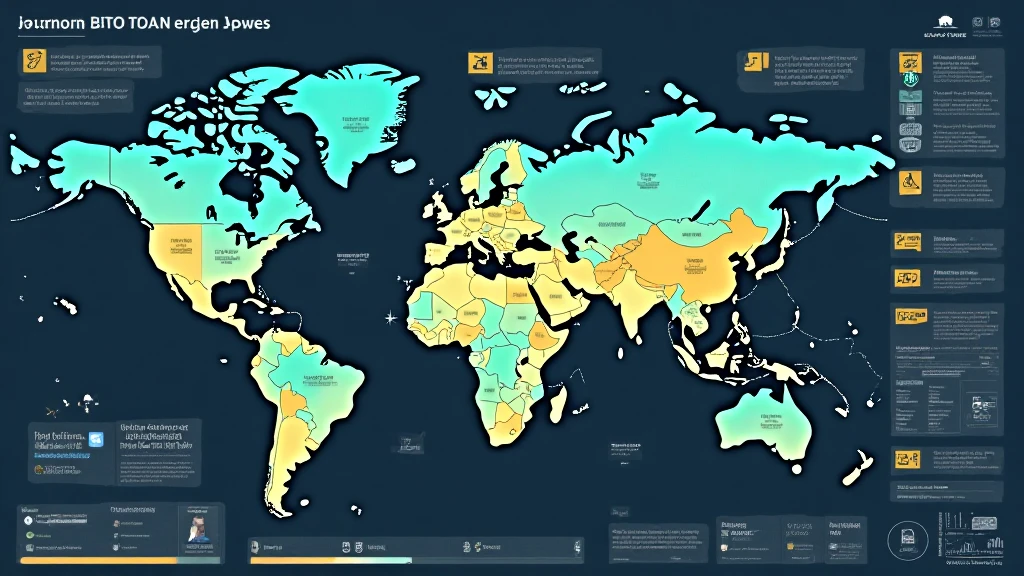Bitcoin Blockchain Energy Efficiency: A New Era of Sustainability
In recent years, the world has witnessed an alarming trend in energy consumption associated with cryptocurrencies. As of 2024, Bitcoin mining is reported to consume an astonishing more than 100 terawatt-hours (TWh) annually, raising concerns over its environmental impact. With the ongoing debate surrounding energy efficiency within blockchain technology, especially focusing on Bitcoin, it’s essential to address these issues and explore the advancements in achieving a sustainable future.
What is Bitcoin and How Does It Work?
Bitcoin is a decentralized digital currency that enables peer-to-peer transactions without the need for intermediaries such as banks. It operates on a blockchain, which is a distributed ledger that records all transactions transparently. Each block in the chain contains a set of transactions, validated by miners who use computational power to solve complex cryptographic puzzles.
This process, known as proof-of-work (PoW), is not only fundamental to the security of the Bitcoin network but also responsible for its significant energy consumption. To illustrate, Bitcoin miners compete to add the next block to the chain, which requires substantial processing power and energy, leading to a heavy carbon footprint.

The Energy Consumption Debate
With Bitcoin’s energy consumption becoming a hot topic, critics have raised questions about its sustainability. The Bitcoin Mining Council estimates that about 56% of Bitcoin mining is powered by renewable energy sources. However, the exact percentage remains contested and varies by region. Some countries have embraced Bitcoin mining due to lower electricity costs, primarily relying on fossil fuels. This has led to environmental concerns.
Bitcoin’s Carbon Footprint
According to a study by the Cambridge Center for Alternative Finance, the carbon emissions from Bitcoin mining could reach between 60 to 90 million tons annually, depending on the energy sources used. Countries like China and the United States hold significant shares in Bitcoin mining activities, often leading to increased greenhouse gas emissions.
Regional Variances in Mining Practices
- United States: With about 35% of global Bitcoin mining, the U.S. benefits from a mix of energy sources, but still faces criticism for a significant reliance on coal in certain areas.
- China: After banning crypto mining, many operations relocated to countries with lax regulations, often relying on carbon-heavy energy sources.
- Vietnam: In light of Vietnam’s growing energy demands, miners are adapting to utilize renewable energy, with a reported 20% yearly increase in users.
Innovations in Bitcoin Energy Efficiency
As environmental concerns mount, many in the Bitcoin community are pushing for innovations to enhance energy efficiency. Here are some key developments:
1. Transitioning to Greener Mining Practices
Efforts are underway to transition Bitcoin mining operations to renewable energy sources. Reports indicate that some mining pools are establishing partnerships with green energy providers to mitigate their carbon footprint.
2. Advanced Mining Hardware
Next-generation mining equipment, such as ASIC (Application-Specific Integrated Circuit) miners, are being developed to maximize efficiency. These devices consume less power while delivering higher hashing rates, thus reducing energy consumption per mined Bitcoin.
3. Mining Pool Initiatives
Mining pools that prioritize renewable energy sources are gaining popularity. They allow miners to collaborate, pooling their resources and reducing the overall energy costs significantly. Additionally, these initiatives promote transparency as members can see the energy sources being utilized.
Regulatory Landscape and Future Implications
The future of Bitcoin mining and its energy consumption will heavily depend on regulatory frameworks. Countries worldwide are examining ways to regulate cryptocurrency mining to promote sustainability:
- In the European Union: New policies are being drafted to incentivize the use of renewable energies in crypto mining.
- Vietnam: The government is considering establishing a national standard for blockchain security, known as tiêu chuẩn an ninh blockchain, which will assess energy efficiency as a key component.
Conclusion: Towards a Sustainable Bitcoin Future
As we round off our examination of Bitcoin blockchain energy efficiency, it becomes evident that while challenges exist, innovative solutions are being explored to align cryptocurrency with environmental sustainability. The way forward will be shaped by technological advancements, regional regulations, and community engagement.
As users, it’s essential to stay informed about the energy consumption of cryptocurrencies we engage with. Emphasizing energy efficiency is not just a benefit for the blockchain industry but a vital step towards a responsible and sustainable future.
For further insights and updates, feel free to explore more on cryptocoinnewstoday.
About the Author
Dr. Thomas R. Hargrove is a renowned blockchain expert with over 15 publications in the field, focusing on energy efficiency in cryptocurrency systems. He has led audits of prominent projects and provides insights into the sustainable future of blockchain technology.





